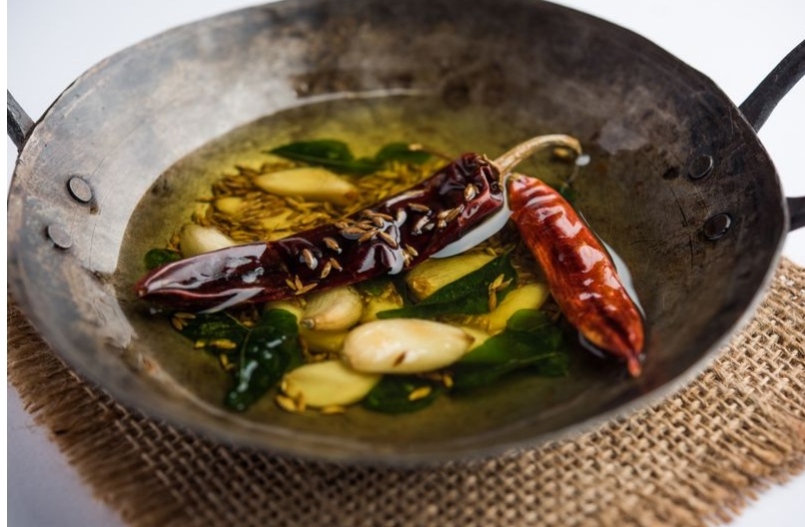Khichdi: India’s one-pot meal the world fell in love with
From a two-ingredient dish to jazzed up versions, the many tales of khichdi

Khichdi: India’s one-pot meal the world fell in love with
‘Khichdi ke chaar yaar, dahi, papad, ghee aur achaar’, this popular Hindi language idiom is my mother’s quirky way to teach the basics of khichdi (rice and lentil cooked together), khichree or khichri. It translates to khichdi has four friends – yoghurt, poppadum, clarified butter, and pickle. In Hindi, the idiom sounds rhythmic, making it easy to remember.
Growing up, there is one dish I was not very fond of – khichdi. For as long as I can remember, I grew up eating khichdi every Saturday. Why Saturday? Because it was a family ritual passed on from my grandmother to my mother. More like a food tradition. Mum says it is one of those rare days when she does not have to overthink and ask everyone what he or she would like to eat.
I disliked khichdi because it felt like a bland dish meant for an ill person. This rice and lentil combination is typically cooked with minimal ingredients, including turmeric and salt. Its rich nutritional value and accessible gut properties make it a sought-after recuperative meal.

Tempering: There are plenty of combinations – add hing (asafoetida) for a piercing flavour, ginger and garlic with cumin seeds or even curry leaves and mustard seeds tempered in ghee or clarified butter
A masala khichdi is a spiced up version of the simple khichdi. Like potatoes? Add it. Like pointed gourd? Chop… chop… and add it too. Want it spicier? Slit some green chillies, a teaspoon of garam masala powder, and cook them together. What is better, you can even temper it with spices of my choice. I try a new tempering every time. There are plenty of combinations – add hing (asafoetida) for a piercing flavour, ginger and garlic with cumin seeds or even curry leaves and mustard seeds tempered in ghee or clarified butter.
From ‘I don’t like khichdi’ to ‘let’s cook khichdi’:
My absolute favourite is a simple yet delicious tempering of ajwain or carom seeds in ghee or clarified butter. I prepare many variations of masala khichdi or have learned to because planning an elaborate meal is not an option on a working day.
On a typical weekday, I reach home from work around 8pm, freshen up, head to the kitchen, open the fridge and ask aloud: “What can I cook in the next 10 minutes?” The refrigerator does not give me an answer as much as I wish it would. I quickly scan through the leftovers, vegetables and end up cooking – masala khichdi. However, a different flavour each time.

A spiced soupy rice and lentil khichdi without turmeric powder
Like many other expats, I struggle with questions about what to eat and what to cook. Over the years, I have learned that a packet of frozen green peas and corn is very handy and versatile. It also adds a little crunch and sweetness to an otherwise plain khichdi. I would call this rendition a fancy khichdi.
Necessity has now made khichdi my go-to favourite food.
How Birbal uses Khichdi to prove mistake in judgment:
A famed courtier in legendary Indian Mughal Emperor Akbar’s court, Birbal, once cooked khichdi for five days as a way to prove his point. It all started with a simple question. Akbar once asked Birbal if people would do anything for money. He replied saying, yes. The monarch challenged a poor man to spend a cold winter night standing inside a lake for money. The poor man completed the challenge. Upon asking what kept him going – he saw a glimpse of light from the emperor’s palace and imagined its warmth. Akbar declared this as cheating and did not give the poor man his reward.

How Birbal uses Khichdi to prove mistake in judgment
Birbal got upset. He told Akbar that he would return to the court after cooking khichdi. When he did not show up for five consecutive days, Akbar decided to go to his house and check. He saw Birbal cook khichdi in a cooking pot hanging five feet above the fire. Akbar asked, “How can the khichdi be cooked if it is so far away from the flame?”
Birbal responded, “The same way the poor man received heat from the ray of light so far away.” Akbar learnt his lesson and rewarded the poor man. And this story became a food fable across generations.
Khichdi – a world traveller
Khichdi originates from a Sanskrit word – khiccā. According to thebetterindia.com, Ibn Batuta, the famous Moroccan traveller on his visit to India in the 14th century, wrote, “Munj [mung beans] is boiled with rice, then buttered and eaten. This is what they call Kishri, and on this, they breakfast every day.”
Kedgeree in the United Kingdom and Scotland is similar to khichdi and travelled with the British and Scottish soldiers. It is a popular breakfast and lunch dish made by boiling rice, fish, parsley, eggs and what the British call – curry powder.
During colonial times in India, many labourers travelled to Fiji to work on sugarcane plantations. With them, they took this rice and lentil dish, and that’s how khichdi made it to the Caribbean Islands.
There is also a meat version of this dish known as khichda, which is quite similar to Haleem (rice and lentil cooked with cubes of meat). The difference being, it uses minced meat. This meat version has been mentioned in Arabic cookbooks and is a popular dish across Hyderabad and Bengal.
In Gujarat, khichdi is usually paired with sweet and sour kadhi (yoghurt and gram flour cooked and tempered with mustard seeds, cinnamon, ginger, curry leaves). Whereas in the Indian state of Maharashtra, it is simply called as dal or lentil khichdi.
Towards the Eastern Indian state of Bengal, this dish is referred to as Khichuri and is often paired with sweet tomato chutney. It is a popular dish during the popular Bengali – Durga Puja festival. Natives of the Indian state of Karnataka have a spicier version of this khichdi – Bisi Bele Bhaat, whereas, in Tamil Nadu, this one-pot meal is known as Pongal. In the North Indian state of Haryana, this dish has a healthier version that includes pearl millet or bajra.
Source :Gulf News




